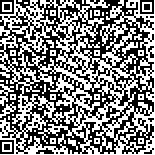| 摘要: |
| [摘要] 目的 观察神经松动术联合肌肉能量技术治疗神经根型颈椎病(CSR)的临床疗效。方法 选择2021年1月至2021年11月昆明市中医医院收治的CSR患者62例。采用随机数字表法将其分为对照组和观察组,每组31例。对照组采用常规康复治疗联合神经松动术,观察组在对照组的基础上增加肌肉能量技术治疗。比较两组治疗前后视觉模拟评分量表(VAS)评分、颈椎功能障碍指数(NDI)评分及临床疗效。结果 在治疗2周后,两组的VAS评分和NDI评分均较治疗前显著降低(P<0.05),且观察组较对照组更低,差异有统计学意义(P<0.05)。观察组临床有效率高于对照组,差异有统计学意义(93.55% vs 74.19%; χ2=4.038,P=0.044)。结论 神经松动术联合肌肉能量技术可有效缓解CSR患者疼痛,改善颈椎功能障碍,具有较好的临床效果。 |
| 关键词: 神经松动术 肌肉能量技术 神经根型颈椎病 临床疗效 |
| DOI:10.3969/j.issn.1674-3806.2022.08.15 |
| 分类号:R 493 |
| 基金项目:中医药康复服务能力提升工程;昆明市卫生科技人才培养项目暨“十百千”工程[编号:2019-SW(后备)-41] |
|
| Observation on the clinical efficacy of nerve mobilization combined with muscle energy technique in treatment of cervical spondylotic radiculopathy |
|
CHEN Hong-bo,YAO Na, SONG Yan-ping, et al.
|
|
Department of Rehabilitation, Kunming Hospital of Traditional Chinese Medicine, Yunnan 650505, China
|
| Abstract: |
| [Abstract] Objective To observe the clinical efficacy of nerve mobilization combined with muscle energy technique in treatment of cervical spondylotic radiculopathy(CSR). Methods Sixty-two CSR patients admitted to Kunming Hospital of Traditional Chinese Medicine from January 2021 to November 2021 were selected and divided into control group and observation group by the random number table method, with 31 cases in each group. The control group was treated with conventional rehabilitation therapy combined with nerve mobilization, and the observation group was treated with muscle energy technique on the basis of the same treatment in the control group. Visual Analogue Scale(VAS) score, Neck Disability Index(NDI) score and clinical efficacy were compared between the two groups before and after treatment. Results After 2 weeks of treatment, the VAS scores and NDI scores in the two groups were significantly lower than those before treatment(P<0.05), and the VAS scores and NDI scores in the observation group were lower than those in the control group, and the differences were statistically significant(P<0.05). The clinical effective rate of the observation group was higher than that of the control group, and the difference was statistically significant(93.55% vs 74.19%; χ2=4.038, P=0.044). Conclusion Nerve mobilization combined with muscle energy technique can effectively relieve pain and improve cervical spine dysfunction for patients with CSR, and has a good clinical effect. |
| Key words: Nerve mobilization Muscle energy technique Cervical spondylotic radiculopathy(CSR) Clinical efficacy |

